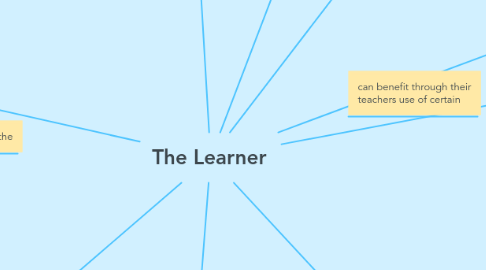
1. Numeracy
1.1. Provide opportunities for students to make connections through
1.2. Teaching Strategies
1.2.1. Discussion
1.2.2. Manipulatives
1.2.3. Reflection
1.2.4. Problem Solving
1.2.5. E-Learning
1.2.6. Group Work
1.2.7. Differentiated Teacher Support
1.2.8. Explicit Teaching
1.2.9. Scaffolding
1.3. Numeracy teaching is dependent on
1.4. Teacher Knowledge
1.4.1. Content
1.4.2. Planning
1.4.3. Mathematics Developmental Continuum P–10
1.4.4. Differentiated teacher support
1.4.5. Mathematical Language
1.5. Student Skills
1.5.1. Higher Order Thinking
1.5.2. Problem Solving Strategies
1.5.3. Represent and model problems / equations
1.5.4. Fluency
1.5.5. Automatic Recall
1.5.6. Reasoning
1.5.7. Understanding
1.6. Strands
1.6.1. Number and Algebra
1.6.2. Measurement and Geometry
1.6.3. Statistics and Probability
2. Curriculum
2.1. Victorian Curriculum (F-10)
2.2. Australian Curriculum (ACARA)
2.2.1. General Capabilities
2.2.2. Achievement Standards
2.3. cam be taught through a range of curriculum models including:
2.3.1. inquiry-based curriculum
2.3.2. integrated curriculum
2.4. often has a
2.4.1. cross-disciplinary focus,
2.5. curriculum documents
2.5.1. outline intended learning outcomes
2.6. should be understood as a range of factors which make up what students learn as part of the curriculum
2.7. details content knowledge
2.7.1. can be taught and learnt in various ways
3. will learn content outlined in the
4. relates to
5. Learning Environment
5.1. the teacher creates a certain learning environment and is influenced by their pedagogical beliefs
5.1.1. the learning environment can be
5.1.1.1. open plan
5.1.1.2. integrated
5.1.1.3. supportive
5.1.1.4. structured
5.2. can facilitate
5.2.1. independant learning
5.2.2. group work
5.2.2.1. through the organisation of the room
5.2.3. interdisciplinary skills including problem solving, reasoning and creative thinking
5.2.4. a supportive and safe learning environment
5.2.5. culturally inclusive learning environment
6. can be impacted in various ways by the
7. Planning
7.1. content-based approach
7.2. experience-based approach
7.3. outcomes-based approach
7.4. must be designed to suit the needs of individual students
7.4.1. and promote engagement and different perspectives
7.5. should promote skills such as
7.5.1. reasoning
7.5.2. critical thinking
7.5.3. creative thinking
7.5.4. problem solving
7.6. depends on knowing the students
7.6.1. and the context in which learning takes place
7.7. an effective method of planning is the backward approach where intended learning objectives create the basis of planning
7.8. must be critically reflective and
7.8.1. flexible
8. learns through effective
9. will learn a range of topic areas including
10. Include but are not limited to
10.1. Instructional Model
10.2. Critical Pedagogy
10.3. Student-centered learning
10.4. Modern Pedagogy
10.5. Integrated Learning
10.6. Inquiry Learning
10.7. Differentiated Instruction
10.8. Experiential Learning
10.9. Constructivism
10.10. Authentic Pedagogy
11. is monitored to provide ongoing feedback through
12. Learning Theories
12.1. Bronfenbrenner's Social Ecological Model
12.2. Maslow's Heirarchy of Needs
12.3. Social Constructivism
12.4. Contemporary Learning Theory
12.5. Behaviourism
12.6. Cognitivism
12.7. Vygotsky's Social Development Theory
12.8. Transformative Learning Theory
12.9. Gardner's Multiple Intelligences Theory
12.10. Project-based learning
12.11. Place-based learning
12.12. Aesthetic Learning and Questioning
12.13. Progressive Learning Theory
12.14. Contemporary Learning Theory
12.15. identify the way in which students learn and aim to facilitate student learning
13. Assessment
13.1. Standardized Testing
13.1.1. NAPLAN
13.2. Reporting
13.3. diagnostic assessment
13.3.1. will be used during my placement to evaluate students knowledge and gain an understanding of their abilities
13.4. Formative
13.4.1. teachers use inferences about student progress to inform their teaching
13.4.2. formal
13.4.2.1. formal assessment can be used in reporting
13.4.3. informal
13.4.3.1. Informal assessment is designed to give students feedback on their progress
13.5. Summative
13.5.1. teachers use evidence of student learning to make judgements on student achievement against goals and standards
13.6. Assessment tools
13.6.1. MOI Mathematics Online Interview
13.6.2. FDOI Fractions and Decimals Online Interview
13.6.3. Running Records
13.6.4. Observation
13.7. understanding learning as an ongoing process.
13.8. Assessment and planning are closely linked
13.9. Assessment is an important tool for me to utilise during my placement experience in order to evaluate the effectiveness of my planning and execution of lessons
13.10. allows the teacher to discover effective strategies that can assist the student in becoming successful
14. Identity
14.1. Culture
14.2. Family
14.3. Background and experiences
14.4. Nationality
14.5. Class
14.6. Race
14.7. Gender
14.8. Place of birth
14.9. Community
14.10. Language
14.11. Friends / Peers
14.12. Location
15. may be facilitated through implementation of certain:
16. can benefit through their teachers use of certain
17. can be better understood and catered for when understanding different aspects related to
18. Pedagogy
18.1. relates to the practice of teaching
18.1.1. where professional identity is constantly evolving
18.2. Pedagogical decisions can create a supportive classroom environment
18.2.1. by using avariety of teaching strategies
